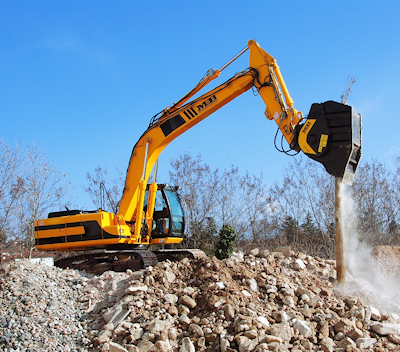How to Stay Safe in Confined Construction Site Spaces
Confined spaces are common in construction. When it’s time to work in one, you need to know how to stay safe as you work.
What Is a Confined Space?
Every regulatory body has a different definition of a confined space. Generally, a confined space has limited or restricted entry and exits. It’s also not a space designed to be continuously occupied. Some countries also define confined spaces as areas with limited ventilation or a higher risk of injury from working conditions.
As a rule, confined spaces have to be large enough for a worker to enter, but they’re not areas regular people are spending time in. Examples of confined spaces include boilers, manholes, utility vaults and storage bins. In the United States, the Occupational Safety and Health Administration (OSHA) regulates the behaviors for safety in confined construction places. Following regulations for confined spaces protects your entire team.
Permit-Required Confined Spaces
OSHA also recognizes permit-required confined spaces, which are areas that pose serious safety concerns like a hazardous atmosphere. Teams working in these areas need regulatory permits and must follow strict entry and operational rules.
Safety Risks in Confined Spaces
A big part of safety on the job is understanding the risks. When your workers know what can happen in a confined space, they can develop safe behaviors to protect themselves and their team. Some of the leading safety risks in confined space include:
- Limited oxygen: When oxygen is low in a confined space, gases like carbon monoxide and methane fill the area. These gases make it harder to breathe and can lead to symptoms like increased pulse and reduced coordination. Using heated tools can also reduce the oxygen levels in a space.
- Heat stress: Confined spaces hold heat and can make the area uncomfortable to operate in. When your body can’t get rid of excess heat, it can lead to confusion and other serious health issues.
- Live wires: Some confined spaces require electrical work. With a small amount of room to move, it’s easier to run into live wires and get electrocuted.
- Unguarded machinery: Typically, confined spaces can hold very few people at once. This situation can lead to machinery being left unsupervised, potentially resulting in a range of safety risks.
Developing a Rescue Plan
When your team operates in a confined space, it’s important to have a rescue plan in place. These rescue plans are required for permit spaces, and they describe a series of steps to help a group retrieve a worker from a confined space. Aspects of a rescue plan can include:
- Selecting a rescue team or service to call in an emergency
- Providing personal protective equipment (PPE) to all employees involved
- Teaching basic first aid and cardiopulmonary resuscitation procedures
- Practicing permit space rescues on a regular schedule
Preparing your team for a rescue is essential to everyone’s safety. When every worker knows their role and how to respond, the rescue will be efficient and have a much higher likelihood of success.
Safety Rules for Confined Places
Every time your crew works in a confined space, you should work through the safety rules. Keeping these rules in place will minimize risks and keep your team as safe as possible. The rules are as follows:
- Free the area of hazards: Before entering a confined space, you should make sure the area is free of any harmful chemicals or substances that could hurt a worker. You should also make sure you have a permit if one is required.
- Test the atmosphere: When the space calls for an entry permit, your team needs to perform atmosphere tests. These tests will gauge the oxygen levels and detect any explosive gases to determine whether there is an explosion risk present. The results of all testing must be recorded for the work permit.
- Always ventilate: To keep the air safe, a ventilation system is a must. Make sure your ventilator is grounded to keep it operating safely. You should regularly test the atmosphere as the job goes on to confirm the levels are in a safe range.
- Look out for your team: Safety depends on accountability. Every worker should look out for one another by pointing out any safety risks and making sure their co-workers have the right habits. Creating a safe work culture will protect everyone for the long term.
- Use protective gear: PPE for confined spaces can include lifelines, gas monitors and self-contained breathing systems. Workers should know how to use this PPE before entering the confined space.
Stay Safe With The Cat® Rental Store
Caterpillar upholds high safety standards in everything we do. At The Cat® Rental Store, you can find the short-term equipment you want with all the safety information you need. Browse our equipment options today.
Find The Cat Rental Store Near You
